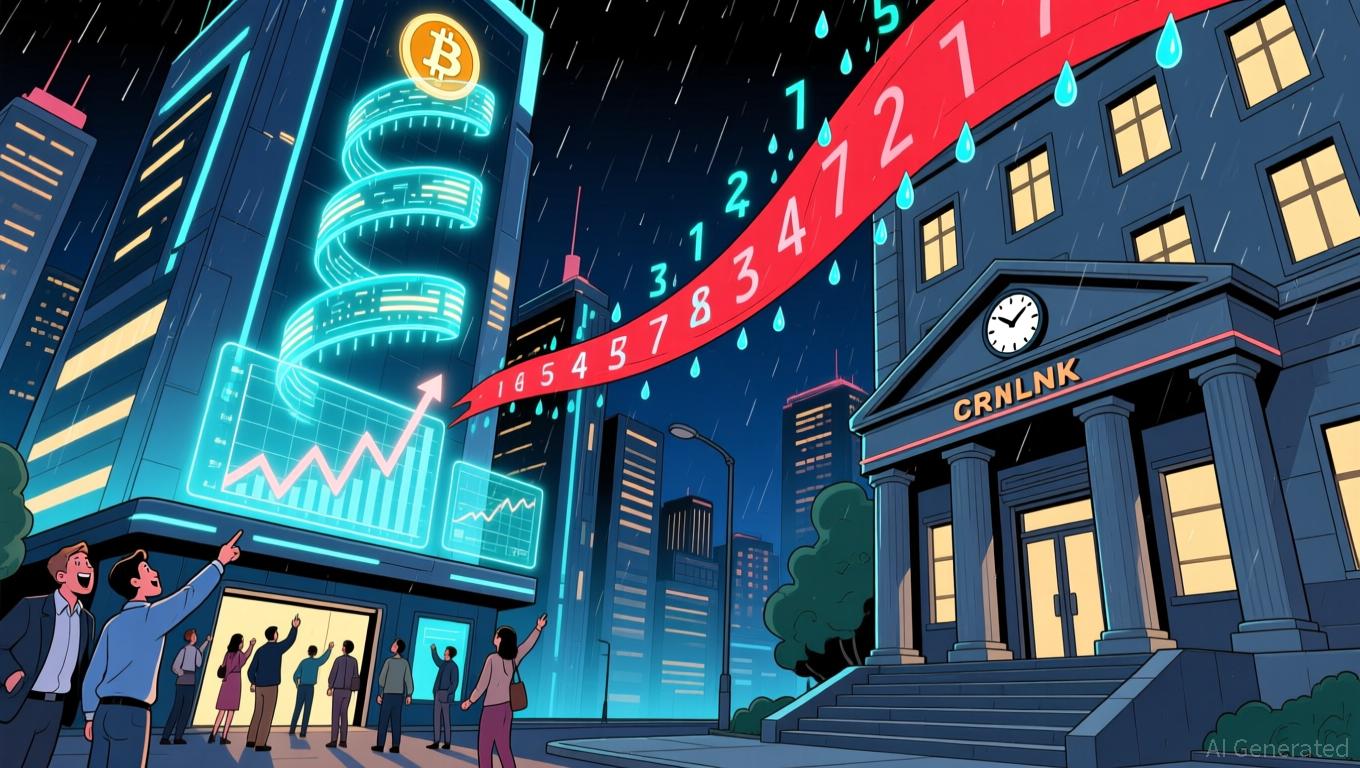Trust Wallet Token (TWT) Price Forecast: Could 2026 Mark a DeFi Surge?
- Trust Wallet Token (TWT) surged to $1.6 in 2025, driven by strategic partnerships and expanded utility via Trust Premium and FlexGas features. - Institutional adoption grew through RWA tokenization (e.g., U.S. Treasuries) and Binance CZ's endorsement, boosting TWT's transactional and governance roles. - Analysts project TWT could reach $3 by 2025 and $15 by 2030, but regulatory risks and DeFi competition pose challenges to its 1-billion-user vision. - With 17M active users and 35% wallet market share, TW
Strategic Partnerships and Ecosystem Expansion
Trust Wallet’s introduction of Trust Premium, a loyalty initiative powered by TWT, has transformed the token’s role by rewarding user participation. Through actions such as swapping, staking, and holding TWT, users accumulate Trust XPs, unlocking tiered rewards (from Bronze to Gold) that include perks like reduced gas fees and priority access to new features, as reported by
An important milestone is the launch of the FlexGas function in August 2025, enabling TWT to cover transaction fees on both
Institutional Interest and Price Drivers
Interest from institutions in TWT has been further fueled by endorsements from prominent figures. In September 2025, Binance co-founder Changpeng Zhao (CZ) publicly commended TWT’s “expanded utility,” which led to a 50% surge in price within hours, according to Bitget. While direct institutional investments are still limited, TWT’s integration into platforms designed for institutional use and its connection to RWAs indicate rising interest among professional asset managers and traders.
On-chain data from Q3 2025 supports this trend. Trust Wallet reported 17 million active users each month and held a 35% share of global crypto wallet downloads by March 2025, as stated in a

Challenges and Risks
Despite these advancements, TWT still encounters significant obstacles. Regulatory ambiguity, especially concerning tokenized RWAs, could slow down institutional participation. The competition from other DeFi-centric tokens and centralized wallet services is also fierce. Trust Wallet’s non-custodial approach and ISO/IEC security certifications, as referenced by CoinLaw, help address some risks, but achieving its ambitious 2030 goal of reaching one billion users will demand ongoing innovation.
Conclusion: A 2026 Breakout Candidate?
TWT’s transformation from a governance token to a versatile utility asset highlights its disruptive potential within DeFi. With strong institutional alliances, expanded transactional capabilities, and a large user community, TWT is well-placed to benefit from the expected surge in blockchain adoption in 2026. Nevertheless, investors should remain mindful of regulatory and market uncertainties that could alter its path. For those prepared to manage these risks, TWT serves as an intriguing example of how DeFi and institutional finance are converging.
Disclaimer: The content of this article solely reflects the author's opinion and does not represent the platform in any capacity. This article is not intended to serve as a reference for making investment decisions.
You may also like
Bitwise’s Chainlink ETF Listed on DTCC as Institutional Interest in LINK Rises

Visa Launches Program to Speed Cross-Border Payments via Stablecoins

Solana News Update: Clearer Regulations Help Crypto Yields Close the Gap with Traditional Finance
- Crypto's yield gap with TradFi narrows as LSTs and RWAs drive innovation, with stablecoins and tokenized assets bridging the 8-11% vs. 55-65% disparity. - U.S. GENIUS Act boosted institutional trust in yield-bearing stablecoins by enforcing collateral rules and AML compliance, spurring 300% YoY market growth. - Circle's 4.15% reserve returns and $740M Q3 revenue highlight stablecoin profitability, while embedded solutions make adoption "invisible" in consumer apps. - DeFi crises like xUSD depegging cause

Bostic's Departure Under Political Scrutiny Challenges the Federal Reserve's Autonomy
- Atlanta Fed President Raphael Bostic announced his retirement in November 2025, stepping down in February 2026 after nearly nine years as the first Black and openly gay Fed regional bank leader. - His tenure emphasized economic equity post-2020 protests and cautious inflation management, supporting two 2025 rate cuts while urging restraint to return to the 2% inflation target. - Bostic's exit coincides with Trump administration pressure for lower rates and potential influence over regional banks , testin
